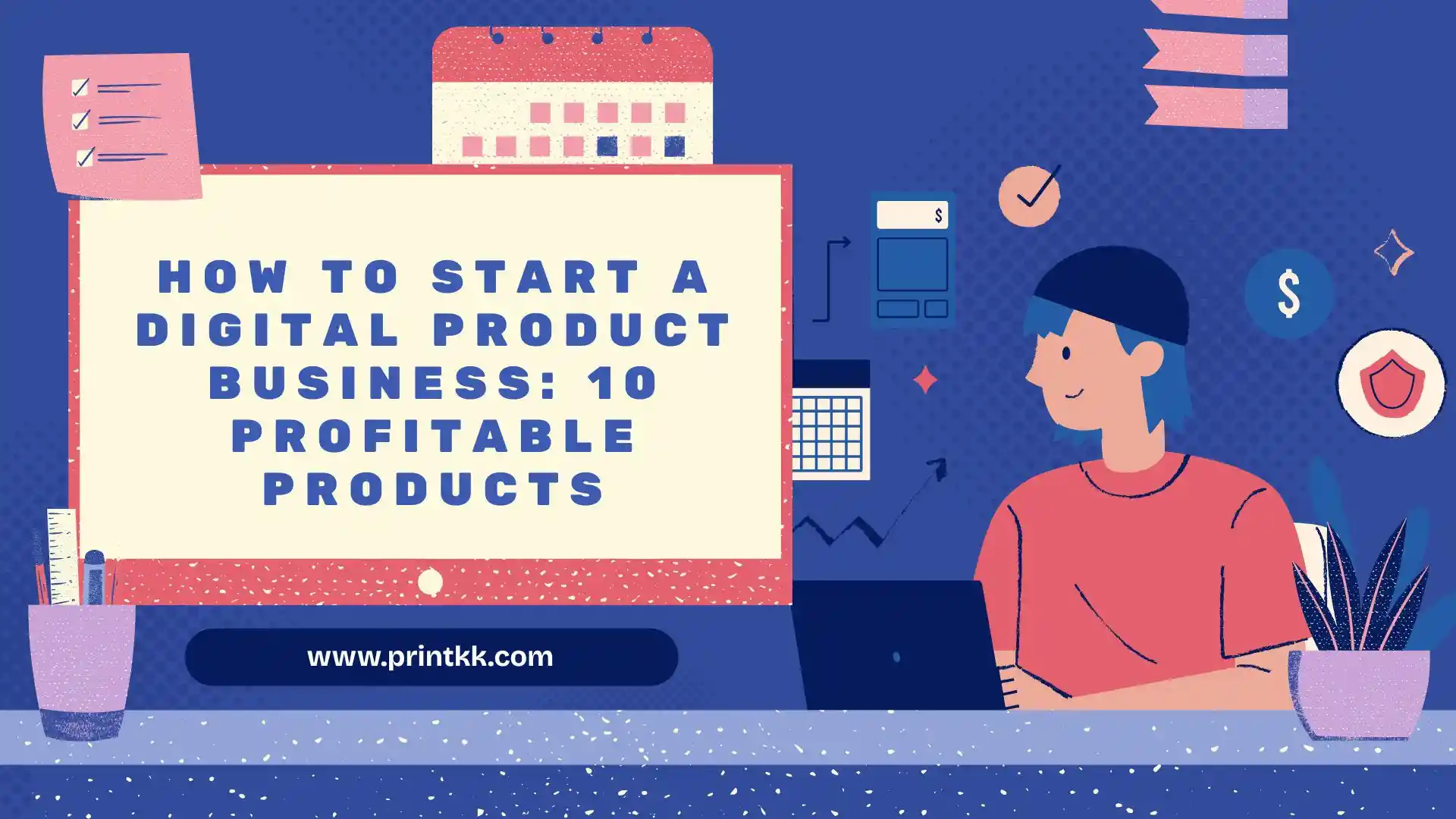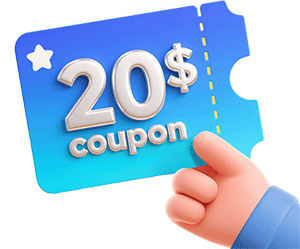
From e-books and templates to online courses and design assets, creators around the world are building new revenue streams without the limitations of inventory or shipping.
But knowing how to start a digital product business can feel overwhelming at first. What should you create? How do you make it profitable?
In this guide, we'll break it down step by step and highlight 10 proven digital products.
Whether you're an entrepreneur, freelancer, or side hustler, this article will give you a clear path to start and grow.
Why Start a Digital Product Business?
A digital product business can give you a way to earn from what you already know. Your expertise, experience, or creative skills can be packaged into products that people actually want. This means you don't need a huge following or expensive equipment to start making money.
One of the biggest advantages is scalability. You can sell the same product to dozens, hundreds, or thousands of people without extra effort. Unlike physical goods, adding more customers doesn't increase your workload or costs.
Digital products also let you respond quickly to trends or customer needs. You can update content, adjust formats, or refine your offerings without large investments. This flexibility makes your business resilient and adaptable over time.
Another benefit is that they create long-term value from a single effort. A well-designed course, guide, or template can continue generating revenue months or even years after it's launched.
This type of business gives you independence. You control the product, the audience, and the price. You can experiment, focus on what works, and slowly expand without the pressures of traditional inventory-based businesses.
Why You Should Start With the Field You Know Best
Many people worry that without a large following, they can't sell a product. Common questions include:
- "I don't have many followers, how can anyone buy my product?"
- "Do I need to write 100 articles before selling?"
- "Do I need an audience first?"
The truth is, followers don't equal buyers. Some people have thousands of followers and still earn nothing, while others start from zero and sell their first product successfully.
The difference is avoiding common mistakes and focusing on real buyers.
When you begin your digital product journey, it's tempting to try something completely new.
But starting with a field you already know gives you a major advantage.
You understand the problems, the common mistakes, and the tools that work. This means you can create a product that truly helps people, instead of guessing what might sell.
Focusing on what you know also makes it easier to define a profitable, targeted topic.
Instead of a broad idea like "career improvement," narrow it down to something specific, such as "Build a personal Notion knowledge hub in 3 hours."
The more precise your topic, the easier it is to reach the people who actually need your solution. Remember, your goal is to solve a real problem for real users—not just to get attention or followers.
Once you pick your area of expertise, start small. Create a Minimum Viable Product (MVP) that addresses one concrete problem.
This could be a PDF guide, a short online course, or a resource pack. The key is to test demand quickly without spending months perfecting it.
Starting with what you know makes this process faster and more reliable, helping you move from idea to actual product with confidence.
How to Start a Digital Product Business
1. Find Your Niche
Start by looking at areas where you already have knowledge or skills. Think about problems you've solved in your own life or challenges you see others facing.
You don't need a huge audience—just a group willing to pay for solutions.
2. Test Your Idea Before You Build
Many people skip this step and waste time creating products no one buys.
If multiple people show willingness to pay even a small amount, it's a strong signal.
Focus on real pain points, not general needs, because solutions to specific problems sell faster than vague ideas.
3. Pick a Product Type That Fits You
Digital products come in different shapes. Some options:
- E-books or guides
- Templates and checklists
- Online courses or workshops
- Software or apps
- Memberships or communities
The format should match your strengths and the audience's preference.
Combining types can increase value—for example, an online course with a downloadable workbook.
The goal is to make it easy for users toconsume and see results quickly.
4. Build Your Product Efficiently
You don't need perfect design to start. Tools like Canva, Notion, or Teachable can speed up creation.
Break content into small, actionable pieces and focus on outcomes people can achieve. A simple, usable product often performs better than a complex one with shiny graphics.
Customers value time-saving and practical solutions over aesthetics, so prioritize usefulness over polish.
5. Create a Straightforward Sales System
Making it easy to buy is more important than building a complicated funnel.
A single landing page with a clear explanation of your product, a payment processor, and maybe a short demo can generate sales.
Highlight what problem your product solves, why it works, and what users get.
You can expand with email sequences or upsells later, but clarity is the key in the first stage.
6. Launch, Collect Feedback, Repeat
Launch is not the finish line. Once people use your product, gather feedback and make improvements.
Early versions don't need to be perfect—real users help you discover what works and what doesn't. Updates, bonuses, and customer support gradually increase satisfaction and revenue.

How to Use AI to Build a Profitable Digital Product
1. Identify Your Strengths and Knowledge
You don't need to be an expert to create a digital product. What matters is that you know a bit more than your target audience and can solve a specific problem.
Start by listing areas where you have experience or skills, like:
- Personal productivity methods
- Industry resources you've collected
- Life lessons from specific challenges
Focus on problems you've solved yourself. These insights can become the foundation for a product that delivers real value.
2. Use AI to Validate Market Demand
AI tools can help you figure out what people actually want. Tools like GPT or DeepSeek allow you to:
- Generate dozens of topic ideas in minutes
- Analyze social media or forums for trending questions
- Simulate customer interest with mini-surveys or content drafts
By testing multiple ideas quickly, you reduce the risk of creating a product no one buys.
3. Build Your Product Faster with AI
Once you know your topic, AI can speed up content creation:
- Draft the structure of guides, mini-courses, or templates
- Fill in explanations, examples, or worksheets automatically
- Rework high-performing content into multiple formats, like PDFs, slides, or short videos
You can even create multiple variations for A/B testing without starting from scratch. This approach saves days or weeks of work.
4. Enhance User Experience Using AI
AI isn't just for creating content. It can also improve how users interact with your product:
- Generate personalized instructions or tips based on user input
- Auto-create quizzes, checklists, or exercises for learning products
- Build simple chatbots to answer FAQs or guide users through the product
These small improvements increase user satisfaction and make your product feel more valuable.
5. Find Early Users and Gather Feedback
Don't wait for a perfect product. AI can help you identify and reach your first 5–10 paying users:
- Analyze community data to locate people most likely to pay
- Draft personalized messages or pre-sale offers using AI
- Track engagement and responses automatically
Early feedback lets you refine content, adjust features, and improve messaging before a full launch.
6. Create a Profitable Product System with AI
Once your product works, scale it with AI:
- Monitor market trends to know when to update or create new content
- Automatically repurpose content for blogs, social posts, or newsletters
- Track usage, satisfaction, and suggestions from users to iterate continuously
This helps you maintain a dynamic product ecosystem where each digital product evolves and stays profitable over time.
10 Profitable Digital Product Ideas You Can Sell Online
1. E-books
E-books let you package knowledge in a way people can access immediately. Think about questions you've been asked repeatedly or solutions you've figured out.
People buy e-books because they want practical advice without wasting time searching online. You can focus on a specific problem or create a collection of tips.
Short guides on niche topics often sell better than broad, generic content.

2. Online Courses
Courses allow you to guide someone step by step. You can teach skills like coding, photography, or language learning.
Buyers are looking for structure, examples, and shortcuts to results. People pay for clarity and direction.
Breaking lessons into short, actionable modules makes it easier to follow. You can combine video, worksheets, and quizzes to increase engagement and perceived value.
3. Templates and Planners
Templates work because they solve a problem instantly. Resume templates, social media graphics, or spreadsheet systems save users hours of work.
Customers buy ready-to-use designs that feel professional. Offering customization options or different styles can make your templates more appealing.
Highlighting how much time your template saves reinforces why it's worth purchasing.
4. Stock Photos and Graphics
High-quality visuals are always in demand. Bloggers, small businesses, and marketers need images and graphics they can use right away.
Free resources are often overused or low quality. Selling themed packs, like seasonal marketing images or lifestyle shots, adds convenience for buyers.
Bundling multiple images increases the perceived value and encourages larger purchases.
5. Printable Art and Posters
Printables art allow people to decorate homes, offices, or classrooms instantly. Buyers like them because they can print as many copies as needed and adjust placement easily.
Quotes, illustrations, or planners work well. Creating sets or collections gives more options and makes the product feel more complete.
Low production cost means you can experiment with different styles without much risk.

Custom Posters (2:3) - Print on Demand Fulfillment - PrintKK
6. Software Tools or Apps
Small tools that solve repetitive problems sell because they save time and reduce frustration.
Budget trackers, productivity apps, or simple automation tools attract users willing to pay for convenience.
You can start with a minimal version and improve based on feedback. Products that actively make life easier tend to retain users longer and generate recurring revenue.
7. Membership Sites or Communities
Memberships give people ongoing value. They pay for exclusive content, tutorials, or networking opportunities.
A focused community keeps members engaged, and interaction becomes part of the value. Fitness programs, business coaching, or hobby clubs work well.
Regular updates, live sessions, or challenges keep the membership active and justify recurring payments.
8. Audio Products
Audio products are convenient for learning or relaxation on the go. Guided meditations, language lessons, or industry podcasts fit into daily routines easily.
Users buy them for portability and ease of consumption. Creating a series or subscription format keeps customers coming back.
Good production quality and clear instructions make your audio products stand out from free alternatives.
9. Digital Workbooks and Guides
Workbooks help users apply knowledge immediately. You can combine exercises, tips, and checklists into one product.
People buy them because they want structured steps that lead to results. Fillable PDFs or interactive versions add flexibility.
Workbooks work well for topics like productivity, habit tracking, or event planning where step-by-step guidance is valuable.
10. Niche Business Templates
Business owners constantly seek ways to save time. You can create templates for social media calendars, email sequences, or project management sheets.
Buyers invest because it reduces setup time and improves output quality. Including instructions or examples increases usability.
Ready-made systems that can be implemented quickly often outperform general templates in value perception.
Read More:
Tips for Finding Your First Group of Customers Quickly
1. Identify Your Ideal Customer
Before reaching out, you need to know exactly who will benefit from your product.
Define a specific problem your product solves and focus on that group.
Trying to appeal to everyone usually slows you down.
By narrowing your audience, you can create messages that speak directly to the people who are most likely to buy. A precise target makes marketing and sales much easier.
2. Leverage Your Existing Network
Your first customers are often people you already know. Reach out to friends, colleagues, or past clients to get feedback or pre-orders.
This group can help you validate your idea and provide honest opinions. Treat this stage as a learning experience rather than a sales push. Their input is more valuable than their numbers.
3. Engage in Relevant Communities
Look for online spaces where your potential customers hang out. Participate in niche forums, Reddit threads, Facebook Groups, or Discord channels.
Share helpful advice and observe discussions to identify members who face the problem your product solves.
Being genuinely useful builds trust and makes people more willing to consider your product.
4. Launch a Minimum Viable Product (MVP)
Create a small, focused product that addresses a single problem. Use pre-sales or early access to test demand.
This helps you see real interest quickly and gives you actionable feedback before investing too much time or money.
5. Iterate and Refine Based on Feedback
After your early users try the product, adjust your offering based on what they liked, didn't like, or asked for.
Update your messaging, improve features, and collect testimonials. These early wins can help you gradually expand your audience and attract more paying customers.
Read More:
Expert Tips
Now you know the key steps and product ideas for starting online. Understanding your audience is the first step.
Focus on solving real problems. Choose a product type that matches your skills. Build it in a way people can use easily.
Learning how to start a digital product business is about action, not perfection. Start small, stay consistent, and adjust as you go. Every small step moves you closer to a sustainable digital business.
FAQs
Can you start digital marketing with no money?
Yes, you can. Focus on free tools like social media, email newsletters, or content platforms. Your time and effort replace money initially, and you can test ideas before investing in paid campaigns.
What digital products sell best?
Products that solve a clear problem or save time tend to sell well. Examples include templates, guides, mini-courses, resource bundles, and tools that users can implement immediately to get results.
What are the legal considerations for selling digital products?
You should ensure your content doesn't infringe on copyrights. Also, consider taxes, terms of service, and privacy rules. Proper disclaimers and clear usage rights protect both you and your customers.
Is it profitable to sell digital products?
Yes, it can be. Once created, digital products have low ongoing costs. Selling to multiple customers without extra production makes the model scalable, allowing profits to grow steadily over time.










 Global Shipping
Global Shipping


 Made in USA
Made in USA



























